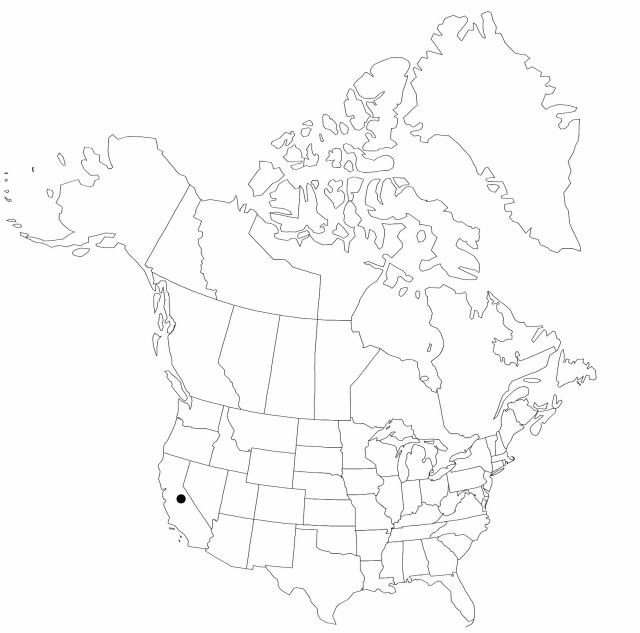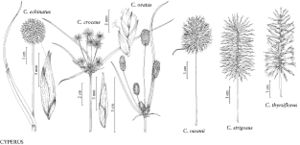Difference between revisions of "Cyperus owanii"
Flora 61: 29. 1878.
FNA>Volume Importer |
FNA>Volume Importer |
||
| Line 51: | Line 51: | ||
|publication year=1878 | |publication year=1878 | ||
|special status= | |special status= | ||
| − | |source xml=https://jpend@bitbucket.org/aafc-mbb/fna-data-curation.git/src/ | + | |source xml=https://jpend@bitbucket.org/aafc-mbb/fna-data-curation.git/src/f6b125a955440c0872999024f038d74684f65921/coarse_grained_fna_xml/V23/V23_315.xml |
|genus=Cyperus | |genus=Cyperus | ||
|subgenus=Cyperus subg. Cyperus | |subgenus=Cyperus subg. Cyperus | ||
Revision as of 19:08, 24 September 2019
Herbs, perennial, cespitose, rhizomatous. Culms roundly trigonous, 80–120 cm × 3–6 mm, glabrous. Leaves 5–12, V-shaped, 30–75 cm × 8–14 mm, septate, leathery, margins harshly scabrid. Inflorescences: spikes 1–4 per ray, loosely ovoid to broadly ellipsoid, 12–20 × 8–12 mm; rays 6–9, 3–10(–12) cm; 2d order rays 1–4, 1–2 cm; rachis 4–12 mm; bracts 5–10, horizontal to ascending at 30°, 15–40 cm × 4–8(–11) mm; rachilla deciduous, wings persistent, hyaline, fragile, 0.3 mm wide, covering less than 1/2 of achene. Spikelets 40–80, narrowly ellipsoid to ellipsoid, roughly quadrangular to weakly flattened, 5–8 × 1.2–1.5 mm; distal spikelet spreading or ascending; floral scales (1–)2(–3), ascending, brick red, medially greenish, laterally 3–4-ribbed, medially 1–3-ribbed, green, ovate, 2.2–3.5 × 1.5–1.8 mm, apex subacute. Flowers: anthers (0.7–)1–1.5 mm, filaments 4–4.7 mm; styles 0.5–0.9 mm; stigmas 2–3 mm. Achenes brown, ellipsoid to oblong-fusiform, 1.7–1.8 × 0.7 mm, base cuneate, apex subacute and apiculate, surfaces finely puncticulate to glabrous.
Phenology: Fruiting spring–fall.
Habitat: Disturbed, damp thickets, open woods
Elevation: 0–200 m
Distribution

Calif., s Africa.
Discussion
Cyperus owanii is easily distinguished from other sedges in California by the large size, reddish spikelets, and secondary rays. It was first collected in California in 1938.
Selected References
None.
